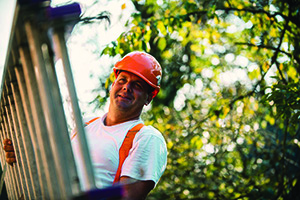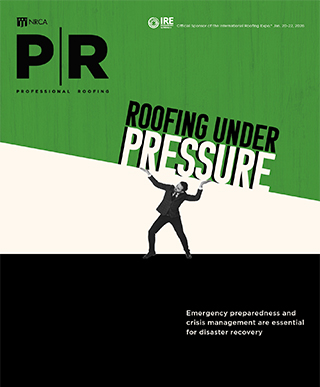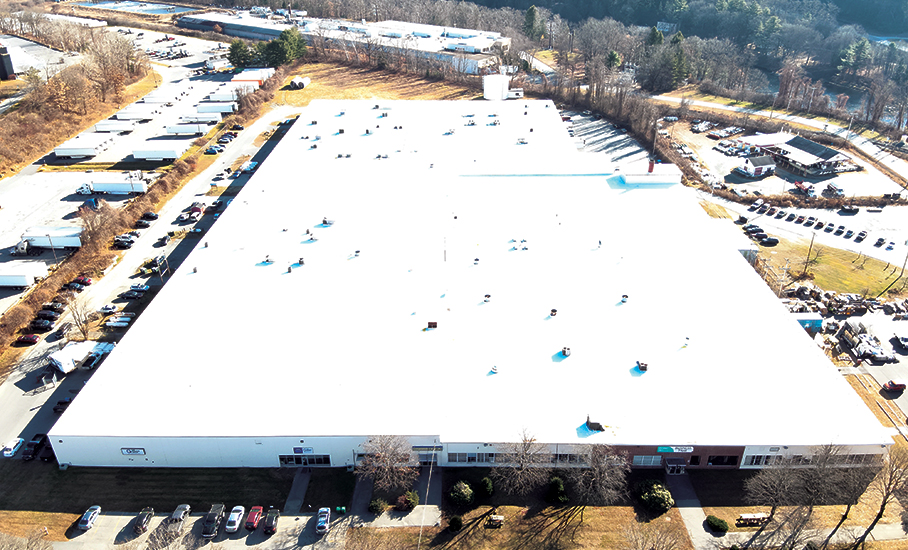Crucial steps in roofing succession planning

Succession planning helps to ensure smooth operations for your company when you are no longer there, providing stability for your employees and financial security for your business. Whether you are considering retirement or want to be prepared for the unexpected, an effective succession plan is crucial to your company’s success.
- Start early. Succession planning should begin long before you plan to retire so you can identify potential successors. Look for individuals in your company who have the skills, experience and passion to lead the business in the future.
- Provide developmental opportunities. Invest in the development of potential successors by offering training, mentorship and opportunities for growth and leadership.
- Document your plan. Be transparent by outlining the process for selecting a successor, transition timeline and other relevant details. Share your plan with key stakeholders, such as family members, business partners and employees.
- Consider family dynamics. If your roofing company is family-owned, be clear about your succession plan and involve family members in discussions to minimize conflicts.
- Consult with professionals. Succession planning involves legal and financial considerations, so it is crucial to speak with lawyers, accountants and financial advisers regarding your plan’s effectiveness.
- Communicate effectively. Be sure stakeholders are informed and address their concerns to help build trust.
- Monitor and adjust. It is important to regularly review and update your plan as circumstances change.
Don’t overlook cold weather hazards

Spring may be around the corner, but cold weather is still a factor in many regions and can pose risks to workers. Sometimes, the risks workers face in cold weather are not obvious.
Safety+Health magazine shares the following hazards you may not be considering.
- Dehydration. This is not just a risk in warm weather. When we exhale, our bodies lose fluids; dry air, which is common during the winter, can worsen fluid loss and increase the risk of dehydration. The cold also can dampen the thirst reflex, resulting in less of an impulse to drink. The Occupational Safety and Health Administration recommends employers educate workers regarding the importance of hydration; equip all work areas with accessible cool water (cooler than 60 F); and encourage workers to keep a sealable bottle of cool water in their work area so they can hydrate.
- The effects of ultraviolet rays. UV rays from the sun are harmful during cold weather and can lead to sunburn and other issues. Workers can protect themselves by covering up and applying sunscreen with an SPF of 15 or higher every two hours. Sun-reflected UV rays on snow also can cause a corneal sunburn, sometimes called “snow blindness.” Workers should wear safety eyewear equipped with UV protection or sunglasses, which also can help guard against dry eyes.
- The effect of cold on self-retracting lifelines. Cold can negatively affect fall-protection equipment, especially self-retracting lifelines; colder temperatures and moisture can cause ice buildup on the locking mechanisms and spool. During such conditions, workers should rapidly pull on the self-retracting lifeline cable during first use and throughout the day to verify the locking mechanism is working. When conditions are wet, workers should store self-retracting lifelines vertically and avoid exposing them to freezing temperatures. If crew members notice their self-retracting lifelines’ locking mechanisms are not working properly, they should be instructed to notify their supervisor and place it out of service.
Construction must attract 439,000 new workers in 2025 to meet demand

The construction industry will need to attract an estimated 439,000 net new workers in 2025 to meet anticipated demand for construction services, according to a proprietary model developed by Associated Builders and Contractors. In 2026, the industry will need to bring in 499,000 new workers as spending ramps up in response to expected lower interest rates.
ABC’s model uses the historical relationship between inflation-adjusted construction spending growth (sourced from the U.S. Census Bureau’s Construction Put in Place Survey) and payroll construction employment (sourced from the Bureau of Labor Statistics) to convert anticipated increases in construction outlays into demand for construction workers at a rate of about 3,550 jobs per billion dollars of additional spending. The model also incorporates the current level of job openings, unemployment and projected industry retirements and exits into its calculations.
“While the construction workforce has become younger and more plentiful in recent years, the industry still must attract 439,000 new workers in 2025 to balance demand and supply,” says ABC Chief Economist Anirban Basu. “If it fails to do so, industrywide labor cost escalation will accelerate, exacerbating already high construction costs and reducing the volume of work that is financially feasible. Average hourly earnings throughout the industry are up 4.4% over the past 12 months, significantly outpacing earnings growth across all industries.
“This represents improved labor availability relative to recent years,” Basu continues. “The improvement can be traced to two primary factors. First, construction spending is expected to grow at its slowest pace in years throughout 2025, especially in interest rate-sensitive segments like homebuilding. Interest rates will remain elevated in 2025 before likely beginning to dip next year. Second, the industrywide workforce has become significantly younger over the past several quarters, with the median construction worker now younger than 42 for the first time since 2011. As a result, the pace of retirements is expected to slow this year.”
Basu says even with that improvement, contractors will continue to struggle to fill open positions.
“This will be especially true in areas where manufacturing and data center megaprojects are underway,” he says. “More than $1 in every $5 spent on nonresidential construction currently goes toward manufacturing projects, and those projects are absorbing a significant share of the labor force in their respective regions.”
Basu says certain factors could render the model as overly conservative, and worker shortages this year could be more severe than expected.
“While the consensus forecast has construction spending increasing by less than 3% in 2025, that same forecast has underestimated growth by a significant margin during each of the past three years,” Basu says. “If inflation dissipates in coming months, borrowing costs will subside and construction volumes will increase. Faster-than-expected immigration over the past few years also has bolstered labor supply, and potential changes to immigration policy will likely constrain worker availability.”



